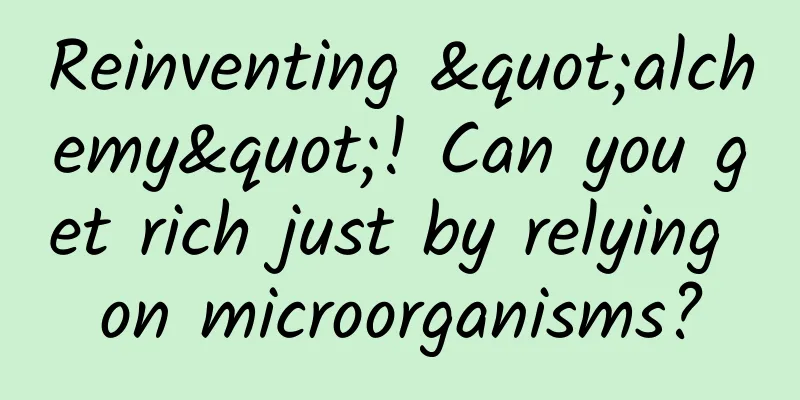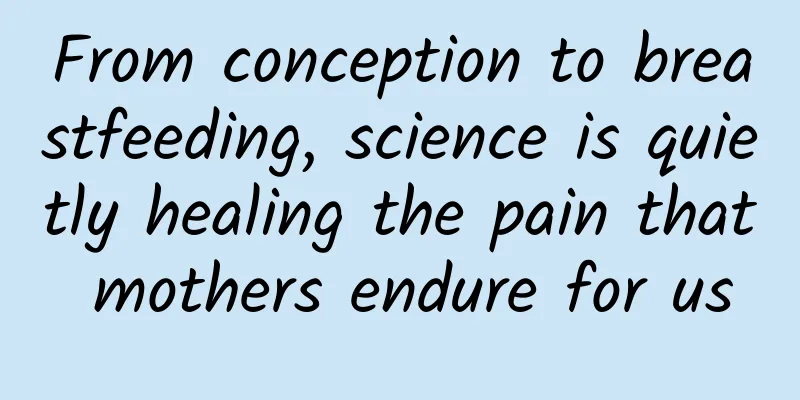Reinventing "alchemy"! Can you get rich just by relying on microorganisms?

|
Although microorganisms are invisible to the naked eye, they play an extremely important role in our daily lives. For example, we have been using microorganisms in our food consciously or unconsciously since ancient times. Yogurt, fermented bean curd, kimchi and other fermented foods are the best examples. Yogurt is the result of microbial fermentation Copyright images in the gallery. Reprinting and using them may lead to copyright disputes. But in fact, in modern industry, microorganisms can do much more than just satisfy human appetites - with the help of modern technology, we can use microorganisms to weave clothes for us (microbial cellulose) , melt down tools we commonly use (microbial plastics) , squeeze out various oils that serve as energy (microbial fuels) , and even help us extract gold from humble ores. In the common perception, microorganisms and gold seem to have nothing in common. So how do bacteria make alchemy? What is the essence of alchemy? To answer this question, we need to first understand the essence of "alchemy". Unlike metals such as iron, copper, and aluminum that are mainly stored in ores in the form of compounds, gold is chemically inactive and does not easily react with common oxygen, carbon dioxide, water, or even weak acids and bases in the environment. Therefore, the gold we have discovered in rock mines is almost pure gold. However, this gold is scattered in other rock components throughout the gold ore layer, and it is rare to directly mine large gold nuggets like digging fossils . Therefore, alchemy is actually the process of using some methods to "catch" the scattered gold from the ore, and then "crystallize" it into gold nuggets or gold grains again . In actual operation, a large amount of gold ore is often needed to extract a small amount of gold. The poem by Bai Juyi, a poet in the Tang Dynasty, "Crossing sand and chiseling stones, it is hard work all year round without winter or spring" describes the difficulty of mining gold and silver at that time. The mined gold ore needs to be ground into fine powder and then washed in water, taking advantage of the fact that gold has a high density and is not easily lost with water to achieve the purpose of screening and enriching gold. In modern alchemy industry, some chemical reagents are added to assist the mining process. The chemical reagents include highly toxic sodium cyanide. Therefore, the traditional alchemy industry is a relatively polluting industry. Microorganisms can also become "alchemists" The gold mining and smelting process is extremely complicated, so the natural gold that can be directly excavated - nugget gold, is particularly precious. Geologists believe that these nugget golds should be formed by secondary crystallization after the gold particles in the gold ore are dissolved into gold ions, but the specific mechanism has not been cracked for a long time . Natural gold may appear in the form of nugget gold in very rare cases. Image source: Wikipedia In 2006, a study led by Frank Reith, a professor at the University of Adelaide, Australia, was published in the journal Science. The study used molecular biology techniques to detect biological components on the surface of natural gold in Australia and identified the DNA of 30 bacteria. One of the bacteria, called Ralstonia metallidurans , was found on all DNA-positive gold particles and was not present in the soil surrounding the natural gold. Next, the researchers added a solution containing gold ions to the culture of this bacteria and observed obvious gold precipitation, proving that these bacteria were involved in the formation of natural gold. In the years that followed, studies from other parts of the world also supported this view, and more types of "alchemical microorganisms" were found in local natural gold. Why can microorganisms do this? What puzzles scientists is that gold is not a nutrient, cannot provide energy for bacteria, does not participate in the normal life activities of bacteria, and gold ions are even toxic to bacteria. So why do "alchemical microorganisms" gather on the surface of natural gold to live and participate in the deposition of gold? In fact, it is better to say that various creatures in nature live in the "most advantageous" environment rather than the "most suitable" environment. The reason why "alchemical microorganisms" choose to live on gold nuggets and participate in the "construction" of gold nuggets is because only they can tolerate the toxicity of gold, and other microorganisms will not compete with them for living space and surrounding nutrients . In 2018, Dietrich H. Nies, a microbiologist at Martin Luther University of Halle-Wittenberg, published an article in the journal Metallomics, revealing that the representative of "alchemical microorganisms" - Cupriavidus metallidurans - uses an enzyme called "CopA" to convert extracellular gold ions into gold particles that are difficult to absorb, thereby resisting the invasion of gold ions on its own cells, producing an "alchemical" effect in the process. When "CopA" is separated out and added to a gold solution, gold particles will also be produced. This study clarified the mechanism of microbial involvement in the formation of natural gold nuggets and has attracted special attention in the fields of biochemistry and metal metallurgy. Copper-tolerant bacteria on gold surfaces Image source: Wikipedia Conclusion The "alchemical microorganisms" may not originally want to become so "golden", but in order to survive, they choose to settle in an environment rich in gold and strive to evolve a "shield" to fight against the invasion of gold. This also makes them as noticeable as gold, which should be "waste" to them, when the secret of "microbial alchemy" is revealed. On the other hand, the discovery of "microbial alchemy" shows that the smelting of natural gold nuggets seems to be the work of microorganisms. If we can develop "microbial alchemy" into a practical technology that can be applied on a large scale, it will definitely help solve the problems existing in the current alchemy industry and promote greener and more sustainable development of human society . References [1]Reith F, Rogers SL, McPhail DC, et al. Biomineralization of gold: biofilms on bacterioform gold[J]. science, 2006, 313(5784): 233-236. [2]Bütof L, Wiesemann N, Herzberg M, et al. Synergistic gold–copper detoxification at the core of gold biomineralisation in Cupriavidus metallidurans[J]. Metallomics, 2018, 10(2): 278-286. Planning and production Produced by Science Popularization China Author: Wang Jinhong Institute of Microbiology, Chinese Academy of Sciences Producer丨China Science Expo Editors: Lin Lin, Jin Yufen (Intern) |
Recommend
Exposed! Some socks contain excessive amounts of carcinogenic dyes! Choosing socks is a science...
Experts in this article: Liao Jie, PhD, School of...
Shocking! A female student from Shanghai International Studies University was thrown a "foreign object"! Multiple platforms urgently removed the app... What on earth is this?
Expert of this article: Liu Zhijun, Pharmacy Depa...
How to use data from wearable devices for health monitoring
【51CTO.com Quick Translation】 With the advancemen...
Yin Chen's 2021 Douyin live streaming sales practice, sharing his journey from Douyin rookie to 3 million GMV per day
Yin Chen's 2021 Douyin live streaming sales p...
Community operation management, growth and sustainable core
I think whether a group is well managed or not de...
Fan Jian's latest Taobao Tmall course in 2022-a series of tutorials to increase conversion rate by at least 200% (advanced)
Fan Jian's latest Taobao Tmall course in 2022...
Electric Technology Car News: Exquisite appearance and perfect endurance, this electric car brings hope to the EV industry
It is said that young people like to follow fashi...
How to become a "100,000 likes" answerer on Zhihu? The Secrets of the 4 Major Internal Skills
Zhihu, a slow company, has now developed into a u...
China's southernmost tropical city volcano group is wearing a pair of "sunglasses"! Don't believe it? Look!
Leizhou Peninsula is the third largest peninsula ...
A money-making project that can earn you 100 times the profit: How to earn over 100 yuan a day by selling virtual learning materials?
Today I want to share with you a blue ocean proje...
Fictiv: 2022 Manufacturing Industry Report
Manufacturing, Evolution After experiencing numer...
Tik Tok and PUBG are using it: 5 ways to effectively improve your retention rate
Why does Harvard Business School say that for eve...
iOS front-end compiler extension - Clang
Part 01: Understanding Clang As we all know, comp...
Phison Financial Report: In January 2024, Phison's consolidated revenue was NT$5.086 billion, a year-on-year increase of more than 75%.
According to recent news, Phison Electronics'...
How much RMB is equivalent to 1 US dollar? Real-time quotes of USD/RMB exchange rate today, July 23, 2020
How much RMB is equivalent to 1 US dollar? Today&...









